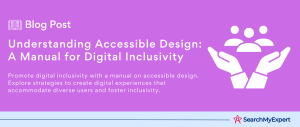The Rise of the Digital Age and Its Impact on Branding
In the ever-evolving landscape of the digital age, branding has undergone a transformative journey. The onset of digital technologies has revolutionized how brands communicate with their audiences, creating a new paradigm in marketing and brand representation. Gone are the days when traditional media dictated the terms of engagement. Today, digital platforms offer unprecedented opportunities for brands to engage directly with their consumers, presenting both challenges and opportunities.
Importance of a Strong Digital Brand Presence in Today’s Landscape
A strong digital brand presence has become indispensable in today’s highly interconnected world. With the majority of consumers turning to online platforms for their shopping, information, and entertainment needs, brands that fail to establish a robust digital presence risk falling behind. This shift has led to a more dynamic and competitive marketplace, where the ability to resonate with the digital consumer can make or break a brand’s success.
Defining Digital Branding:
Digital branding is more than just an online presence; it’s about crafting a digital identity that effectively communicates a brand’s values, mission, and personality. This involves a strategic blend of content, design, and user experience, tailored to meet the needs and expectations of a digital audience. Digital branding extends across websites, social media, online advertising, and more, creating a cohesive and immersive experience for the consumer.
Defining Your Brand Mission, Vision, and Values
The foundation of any strong digital branding strategy lies in a clear understanding of your brand’s mission, vision, and values. These core elements not only guide your business strategies but also resonate with your audience, creating a deep and meaningful connection.
- Brand Mission: Your brand mission should succinctly describe the purpose of your business. It’s the driving force behind what you do and why you do it. A well-defined mission helps in aligning your branding efforts and serves as a compass for all your digital content.
- Brand Vision: While your mission is about today, your vision is about tomorrow. It’s an aspirational statement that outlines what you want to achieve in the future. A clear vision helps in setting long-term goals and gives your audience a glimpse of where you’re headed.
- Brand Values:
These are the principles that define your brand’s culture and ethics. Values are critical in shaping how your brand is perceived and can be a deciding factor for consumers who prioritize businesses that align with their personal beliefs.
Identifying Your Target Audience and Their Online Behavior
Understanding your target audience is pivotal in crafting a digital branding strategy that resonates and engages. It involves more than just demographic data; it’s about grasping their online behaviors, preferences, and pain points.
- Demographics and Psychographics: Start by defining the age, gender, location, income level, education, and other demographic details of your target audience. Then dive into psychographics like interests, lifestyles, values, and attitudes.
- Online Behavior: Analyze where your audience spends their time online. What social media platforms do they frequent? What kind of content do they engage with? Understanding these aspects helps in tailoring your digital branding efforts to the right platforms and formats.
Developing a Unique Brand Voice and Personality
Your brand’s voice and personality are what makes it distinct and memorable. They should reflect your mission, vision, and values, and be consistent across all digital platforms.
- Brand Voice:
Is your brand formal or casual? Witty or serious? The tone you use in your content should match your brand’s personality and appeal to your target audience. - Brand Personality:
Think of your brand as a person. What kind of personality traits would it have? This personality should be evident in your visuals, content, and overall online presence, making your brand relatable and engaging.
Creating a Visually Appealing and Memorable Logo and Color Palette
The visual elements of your brand, particularly your logo and color palette, play a crucial role in making your brand recognizable and memorable. These elements are often the first interaction a customer has with your brand, making it essential to get them right.
- Logo Design: Your logo should be more than just an attractive design. It needs to encapsulate your brand’s essence and be easily recognizable. Whether it’s a symbol, wordmark, or a combination of both, ensure it’s scalable and looks good across various mediums.
- Color Palette:
Colors evoke emotions and communicate messages without words. Choose a color palette that reflects your brand’s personality and values. Consistency in color usage across all your digital platforms helps in building brand recognition.
Designing a User-Friendly and Branded Website or App
Your website or app is often the hub of your digital branding efforts. It’s where most customers will go to learn more about your brand, products, or services.
- User-Friendly Interface:
The usability of your website or app is paramount. A well-designed, intuitive interface ensures a positive user experience, encouraging visitors to stay longer and engage more with your brand. - Branding Elements: Incorporate your logo, color palette, and brand voice into the design. Consistent branding helps reinforce your identity and leaves a lasting impression on users.
Ensuring Consistency Across All Digital Touchpoints
Consistency in your digital branding across all platforms is key to building a cohesive brand identity. This includes not just your website and app, but also your social media profiles, email campaigns, digital ads, and any other online presence.
- Visual Consistency:
Use the same logo, color scheme, and design elements across all platforms. This visual consistency makes your brand instantly recognizable, no matter where it’s encountered. - Voice and Messaging Consistency: The tone, language, and type of content you share should align with your brand personality. Whether it’s a tweet, a blog post, or an email, maintaining a consistent voice and message strengthens your brand’s identity.
Identifying Relevant Content Formats
A versatile and effective content strategy hinges on utilizing a variety of formats to engage your audience. Each format offers unique advantages and can be used to convey your message in different ways.
- Blog Posts:
Ideal for in-depth exploration of topics, establishing thought leadership, and improving SEO. Blogs can cover a wide range of subjects relevant to your audience and industry. - Videos:
Videos are highly engaging and can communicate complex ideas in an easily digestible format. They are great for tutorials, product demonstrations, and brand storytelling. - Infographics:
These are perfect for presenting data, statistics, or information in a visually compelling way. Infographics are highly shareable and can simplify complex concepts.
Creating High-Quality Content That Resonates With Your Target Audience
The key to successful content is not just regular posting, but delivering high-quality material that truly resonates with your target audience.
- Understand Your Audience: Know what your audience is interested in, their pain points, and preferences. Tailor your content to meet their needs and interests.
- Value and Relevance:
Ensure that your content provides value, whether it’s educational, informative, or entertaining. Relevant content will keep your audience engaged and coming back for more. - Quality Over Quantity:
Focus on producing well-researched, well-produced content. High-quality content enhances your brand’s credibility and authority.
Utilizing Storytelling to Build Emotional Connections and Brand Loyalty
Storytelling is a powerful tool in digital branding. It can humanize your brand and create deeper, more emotional connections with your audience.
- Personal and Relatable Stories: Share stories that your audience can relate to. This could be customer success stories, behind-the-scenes glimpses, or the journey of your brand.
- Emotional Engagement:
Craft narratives that evoke emotions. People are more likely to remember and form a bond with your brand if you can touch their hearts. - Consistent Narratives: Ensure that your storytelling aligns with your brand’s mission, vision, and values. Consistent narratives reinforce your brand identity and foster loyalty.
Choosing the Right Social Media Platforms to Connect with Your Audience
Navigating the world of social media is critical for digital branding success. Not all platforms cater to the same audience, and understanding where your target audience spends their time is key to effective engagement.
- Identify Your Audience’s Preferred Platforms:
Different demographics gravitate towards different social networks. For instance, LinkedIn is ideal for B2B audiences, while Instagram and TikTok may be more suitable for a younger consumer base. - Align with Brand Goals and Content-Type:
Choose platforms that align best with the type of content you create. Visual brands might prefer Instagram or Pinterest, while those focused on community building might find more success on Facebook or Reddit.
Posting Engaging Content and Fostering Positive Interactions
Your presence on social media should be engaging and interactive, fostering a two-way conversation with your audience.
- Create Platform-Specific Content:
Content should be tailored to the format and style of each platform. What works on Twitter may not be suitable for Instagram, and vice versa. - Encourage Interaction:
Ask questions, conduct polls, and invite feedback to engage your audience. Responding to comments and messages helps in building a rapport with your followers.
Building Communities and Encouraging User-Generated Content
Building online communities and encouraging user-generated content can greatly amplify your digital branding efforts.
- Create Brand Communities:
Platforms like Facebook Groups or dedicated forums can be used to build communities around your brand. These spaces allow for deeper engagement and customer loyalty. - Leverage User-Generated Content:
Encourage your audience to share their own content related to your brand. This not only provides you with additional content but also enhances community engagement and trust.
Tracking Key Metrics to Understand the Effectiveness of Your Strategies
Measuring the performance of your digital branding efforts is crucial to understand their effectiveness and identify areas for improvement. Key metrics provide valuable insights into how well your strategies are resonating with your audience.
- Engagement Metrics:
Track likes, shares, comments, and click-through rates on social media posts and content. High engagement rates often indicate content that resonates well with your audience. - Traffic Metrics:
Monitor the number of visitors to your website or app, along with metrics like page views, unique visitors, and time spent on site. This helps in understanding the reach of your digital presence. - Conversion Metrics:
Track conversions, such as newsletter sign-ups, downloads, and sales. These metrics are crucial for understanding the ROI of your digital branding efforts.
Utilizing Analytics Tools to Gain Insights into Audience Behavior
Analytics tools are indispensable in gaining a deeper understanding of your audience and the performance of your content.
- Google Analytics: This tool provides comprehensive insights into website traffic, user behavior, and conversion data. It can help you understand where your traffic is coming from and what content is most effective.
- Social Media Analytics: Platforms like Facebook Insights and Twitter Analytics offer valuable data on your social media performance, including audience demographics, post engagement, and optimal posting times.
Optimizing Your Approach Based on Data and Feedback
Data-driven optimization is key to refining and improving your digital branding strategy.
- Identify Successful Strategies: Use data to identify which aspects of your digital branding are performing well. Replicate these successful tactics in other areas where possible.
- Experiment and Adapt:
Don’t be afraid to experiment with new approaches and measure their impact. The digital landscape is constantly evolving, and so should your strategies. - Respond to Feedback:
Pay attention to direct feedback from your audience, both positive and negative. Use this feedback to make informed adjustments to your approach.
Staying Up-to-Date with the Latest Digital Trends and Technologies
In the rapidly changing landscape of digital branding, staying current with the latest trends and technologies is essential for maintaining relevance and competitive edge.
- Continuous Learning: Regularly research and learn about emerging digital trends. This can be achieved through industry blogs, webinars, online courses, and attending relevant conferences.
- Tech Adoption: Be open to adopting new technologies that can enhance your digital branding. This might include AI-driven analytics, augmented reality experiences, or the latest developments in social media algorithms.
Embracing Innovative Channels and Strategies to Engage Your Audience
Innovation is key in keeping your audience engaged and interested in your brand.
- Explore New Platforms: Don’t hesitate to test out emerging social media platforms or digital channels. Early adoption can give you a head start in engaging with new audiences.
- Creative Campaigns:
Think outside the box with your digital marketing campaigns. Innovative and unique campaigns can capture the attention of your audience and set you apart from competitors.
Building a Flexible and Adaptable Digital Brand for Long-Term Success
The digital world is dynamic, and so should be your branding strategy. A flexible and adaptable approach ensures long-term success in the digital realm.
- Feedback Loops: Implement systems to regularly gather and analyze feedback from your audience. This feedback is invaluable for making timely adjustments to your strategies.
- Agile Methodologies:
Adopt an agile approach to your digital branding efforts. This means being ready to pivot your strategies quickly in response to market changes, new insights, or unexpected challenges. - Future-Proofing:
Always think ahead. Try to foresee future trends and prepare your brand to adapt. This might involve diversifying your digital presence or investing in scalable technologies.
Conclusion:
In conclusion, the journey of digital branding in the modern business landscape is both challenging and rewarding. From understanding the core of your brand, crafting a visually cohesive identity, to engaging with your audience through compelling content and social media strategies, every step is crucial in carving out a distinct space for your brand in the digital world. The key to success lies in staying informed, being adaptable, and consistently delivering value to your audience. By embracing these strategies, businesses can build a robust digital brand that not only resonates with their target audience but also stands the test of time in the ever-evolving digital arena. Whether you’re a startup or an established business, these insights into digital branding can help steer your brand towards greater visibility, engagement, and growth.
Craft a visually stunning digital presence with our Digital Design Company.
Table of Contents
Toggle






